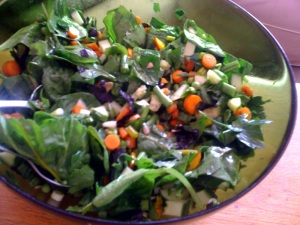 Cellulite, the scourge of the modern women. It is possibly the #1 issue that women have about their appearance, especially as the days get hotter and the prospect of bare legs looms nearer. The weekly trash mags love to hi-light it on celebrity bodies – making them ‘more real’.
Cellulite, the scourge of the modern women. It is possibly the #1 issue that women have about their appearance, especially as the days get hotter and the prospect of bare legs looms nearer. The weekly trash mags love to hi-light it on celebrity bodies – making them ‘more real’.
Don’t get me wrong, in this day and age where airbrushing pictures is so de rigeur that we have a distorted view of perfection, I would be lying if I said seeing cellulite on an otherwise ‘supposedly’ perfect body didn’t make me feel a little warm inside. However, my personal viewpoint is that the media, rather than focusing on the not particularly nice looking stuff should focus on the natural and positive attributes – without the digital effects of image distortion.
Excessive cellulite is a result of our fast-paced processed/junk food lifestyle. It can appear on the stomach, arms, bums and thighs – i.e. the places where fat is stored. That said, cellulite is a multi-faceted issue, there is not a total cure, however there are a number of nutritional protocols that you can do to help reduce it dramatically.
Contributory Factors:
The presence of cellulite indicates congestion within the body’s fatty tissues. Poor diet, lack of exercise, constipation, over-burdened liver contribute to toxin overloads that impair the efficiency of blood flow and lymph circulation as well as the exchange of fluids, nutrients and expulsion of toxins from cells.
Lymph:
This is how the fatty tissue is transported around the body. Unlike the blood, there is no pump so it is pushed around the body, solely via the movement of the body, which is why exercise is so important. When lymph is overburdened and there is a build-up of toxins this can be a significant contributor to cellulite and skin appearance.
Liver:
The liver is the body’s workhorse. Everything that comes into our bodies will go through the liver at some point from alcohol and drugs to the nutrients of food, cholesterol is made here, as are hormones – and it detoxifies all the nasties that our body can not cope with for elimination via the digestive tract. It is our silent partner, the background cog that just keeps on churning, no matter how much crap we throw at it. When the liver is at capacity or does not have the required nutrients to perform its actions with each of the detoxification pathways, it becomes clever. It packages up toxins, such as heavy metals like mercury, lead, aluminum; or chemicals or plastics that we consume through our food, bundles them up and hides them so they do not cause a threat to the body.
And guess where they are hidden? In the fat cells, which are innate so cannot cause damage.
This makes the fat cells more difficult to remove and contributes to the cellulite problem.
Connective tissue:
The connective tissue that separates cells becomes weaker with age, and if the requisite nutrients are not consumed or absorption is problematic then this will increase the fragility and exacerbate the orange peel effect.
Cell Function:
If the body is dehydrated and not enough good fats are consumed in the diet then there will be issues surrounding fluid and nutrient exchange and toxin removal. The cells become harder and it is more difficult for these essential actions to occur.
Constipation:
Toxins are eliminated via the bowel and if constipation occurs the will be re-absorbed and recycled in the body. This has a cumulative effect on toxin levels and increases toxic storage requirement in fat cells. Dietary fibre, good gut bacteria, magnesium, essential fats and water are all essential ingredients to allow good stools to be formed.
What to avoid:
The concept of Negative Equity NutritionTM is ideal to follow here, foods that are high in sugars, saturated fats, additives, chemicals, toxins, salt, caffeine and low in fibre all impact cellulite including:
- Processed, ready meals and junk foods
- White starchy carbohydrates (bread, pasta, rice)
- Trans, hydrogenated and saturated fats: baked goods, processed meats, cakes, biscuits and crisps.
- Caffeine and artificial sweeteners in fizzy drinks & fruit cordial
- Excess red meat and dairy products can trigger higher oestrogen levels, which also increases the burden on the liver
- Alcohol: the sugars and toxins in alcohol directly impact the body.
- Smoking reduces blood flow to the skin and destroys vitamin C and zinc levels – both crucial nutrients for skin health.
What should we be eating instead?
- Strengthen the connective tissue: Peppers, kiwi fruit, broccoli, citrus fruit, tomatoes, berries and peas are rich in vitamin C. Goji berries, blueberries, cherries, blackberries, grapes and buckwheat are full of bioflavonoids.
- Water – water is the most important ingredient to help flush the skin and keep cells working well.
- Liver support: Dark green leafy vegetables such as cabbage, kale, brussel sprouts, cauliflower, watercress, radishes and grapefruit. Research has shown that cabbage proteins have helped enhance liver detoxification as do broccoli sprouts, which contain sulphoraphane.
- Enhance cell performance and balance hormones through increased consumption of essential fats – nuts, seeds, oily fish and omega 3 enriched eggs.
- Organic food is preferable if you want to remove the toxins from the food you eat. If you have budgetary considerations, purchase organic varieties of apples, pears, berries, grains and citrus fruits.
Finally, bodybrushing and exercise such as rebounding specifically help to stimulate lymph and may be helpful in reducing cellulite, however, any active exercise will aid the movement of lymph and enable the bodys cells to work more effciently.

